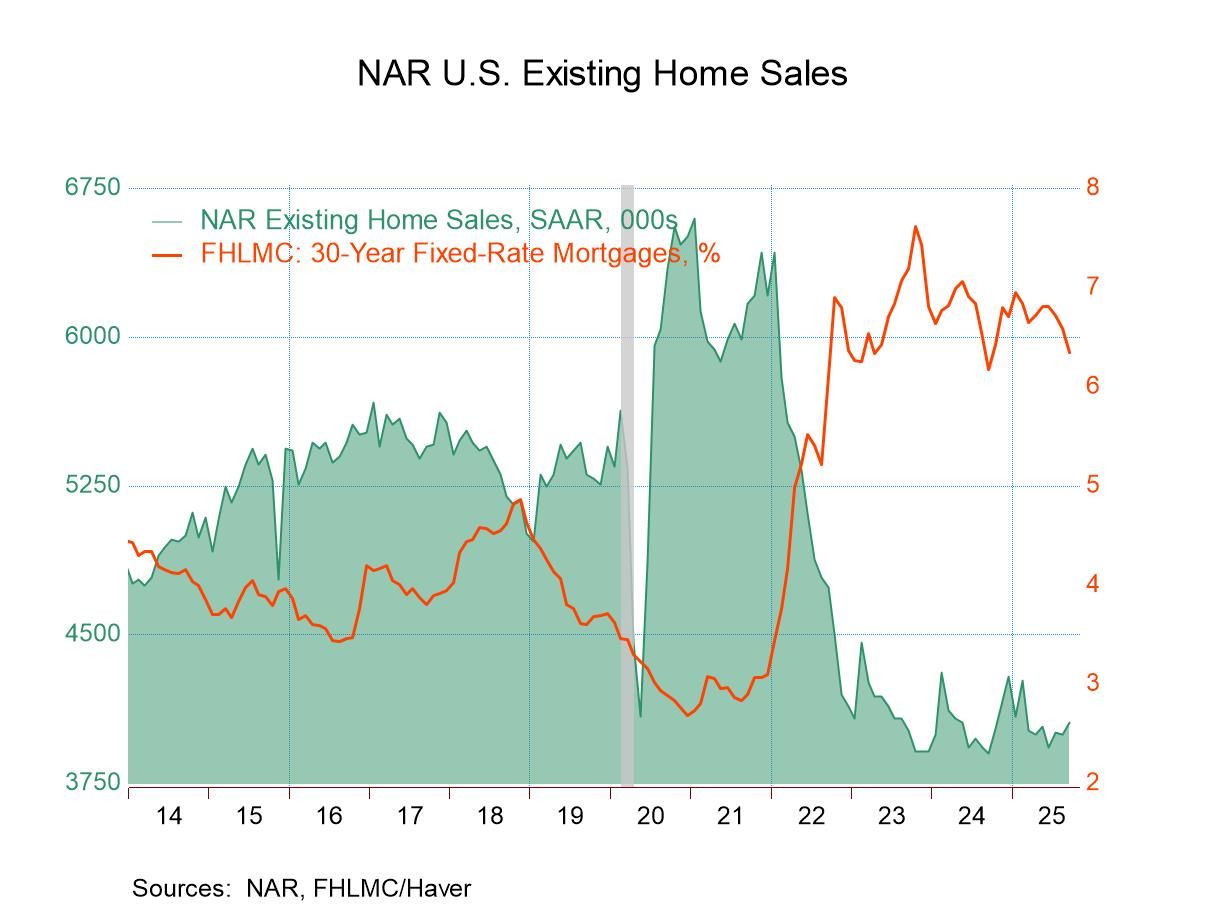 Global| Apr 23 2009
Global| Apr 23 2009E- Area PMIs Are Still Low-Valued But Jump
Summary
The PMI’s for the zone are up sharply in April. At 36.33 the MFG PMI is still in the lower 11 percentile of its range. The services reading at 43.10 is in the lower 16 percentile of its range. These are weak positions that speak of a [...]

The PMI’s for the zone are up sharply in April. At 36.33 the
MFG PMI is still in the lower 11 percentile of its range. The services
reading at 43.10 is in the lower 16 percentile of its range. These are
weak positions that speak of a continuing low level of economic
activity. But there is also some good news.
In April the MFG PMI has made its largest jump since the
series began in June of 1997. The MFG index is up by 2.73 points in
April. Similarly the Services PMI has risen by 2.15 points and that is
the fourth largest jump m/m rise for services since Feb of 1999 when
that series started.
The jump for services comes on the heels of a 1.17 point gain
in the index in March which was the eight largest rise at that time. So
services in Europe are making greater strides toward improvement in the
last few months.
Of course the level of the two indices is still very low. Both
are below the break-even line of 50; both indices attest to the
continuing unraveling of economic activity in Europe. On top of that a
new poll by the German economic think-tanks projects a 6% drop in GDP
for the year ahead in that key e-Zone country. For the UK, Barclays CEO
has just prognosticated a deep and long downturn in the UK. In France
has a new domestic survey on business sentiment says that it has gained
some small ground.
There are both scattered signs of improvement in Europe and at
the same time pessimistic assessments of where the economy is as well
as of where it is going over the rest of the year. It is not clear
which of these signals markets are going to latch onto. Still, it is
reassuring to see the down drafts slowing. The report of new industrial
orders out the e-Zone today is an example of this topsy-turvy news. EMU
orders took the largest Yr/Yr drop in their history today. Still the
series reported a one of its smallest month-to-month drops. So, even as
the year /year data confirm how bad the orders drop has become, there
is evidence that the declines are set to slow. The bottom line is that
Europe is probably worse off than many have been thinking- including
the authorities that have been reluctant to act aggressively and even
stiffed the US request to do more at the recently concluded G-20
| FLASH Readings | ||
|---|---|---|
| Markit PMIs for the E-Zone | ||
| MFG | Services | |
| Apr-09 | 36.66 | 43.10 |
| Mar-09 | 33.93 | 40.95 |
| Feb-09 | 33.55 | 39.24 |
| Jan-09 | 34.42 | 42.16 |
| Averages | ||
| 3-Mo | 33.97 | 41.10 |
| 6-Mo | 35.41 | 41.66 |
| 12-Mo | 41.90 | 45.06 |
| 127-Mo Range | ||
| High | 60.47 | 62.36 |
| Low | 33.55 | 39.24 |
| % Range | 11.6% | 16.7% |
Robert Brusca
AuthorMore in Author Profile »Robert A. Brusca is Chief Economist of Fact and Opinion Economics, a consulting firm he founded in Manhattan. He has been an economist on Wall Street for over 25 years. He has visited central banking and large institutional clients in over 30 countries in his career as an economist. Mr. Brusca was a Divisional Research Chief at the Federal Reserve Bank of NY (Chief of the International Financial markets Division), a Fed Watcher at Irving Trust and Chief Economist at Nikko Securities International. He is widely quoted and appears in various media. Mr. Brusca holds an MA and Ph.D. in economics from Michigan State University and a BA in Economics from the University of Michigan. His research pursues his strong interests in non aligned policy economics as well as international economics. FAO Economics’ research targets investors to assist them in making better investment decisions in stocks, bonds and in a variety of international assets. The company does not manage money and has no conflicts in giving economic advice.






